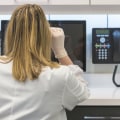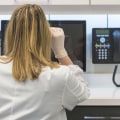Dosimetry is an essential field of radiation protection and health physics that helps to calculate, measure, and evaluate the amount of ionizing radiation absorbed by an object or part of the human body. This can include both external and internal radiation, such as energies that are inhaled or ingested. Dosimeters are used to ensure that a harmful dose of radiation is not received for a given period of time. Governments have regulations in place to protect and control occupational radiation exposure.
The primary purpose of a dosimeter is to keep occupational doses as low as reasonably achievable (ALARA). This is done by monitoring the amount of radiation absorbed by an individual over a certain period of time. This helps to ensure that workers are not exposed to dangerous levels of radiation, which can lead to serious health issues. Dosimetry also helps to identify areas where radiation levels are higher than normal.
This allows for corrective measures to be taken in order to reduce the risk of exposure. Additionally, dosimetry can be used to monitor the effectiveness of safety measures that have been put in place. Dosimetry is also used in medical settings, such as radiotherapy and nuclear medicine. In these cases, dosimetry helps to ensure that patients receive the correct dose of radiation for their treatment.
It also helps to monitor the effectiveness of treatments and ensure that patients are not exposed to dangerous levels of radiation. Overall, dosimetry is an important tool for ensuring the safety of workers and patients who may be exposed to ionizing radiation. It helps to monitor radiation levels and ensure that they remain within safe limits. Additionally, it can be used to identify areas where radiation levels are higher than normal and take corrective measures to reduce the risk of exposure.


